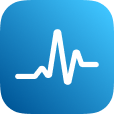Home Meedika
From the logo design, the design system, to the design of all the app views.

App that seeks to centralize all health information of its users in one place, where each individual can manage it and decide when and with whom to share it.
• Responsible for the design and development of the Meedika App user interface.
• Design of the Design System using the atomic design model.
• Workflow Definition: Identify and document the current and proposed workflows for Meedika.
• Information Architecture Design: Collaborate with the team to design an intuitive and easy-to-navigate information architecture.
• Iterative Prototyping: Facilitate iterative prototyping sessions with the team to explore and validate different design solutions.
• Results-Based Iteration: Use usability test results to iteratively improve the App's design continuously.
• Project Management: Oversee and coordinate UX design team activities to ensure deadlines and project deliverables are met.
• Close collaboration with development and product teams to ensure design consistency and quality throughout the App's lifecycle.
The initial goal of Meedika was to centralize and simplify user and family medical information access, empowering users to manage and share this information securely and controlled. To achieve this:
• The main frustrations and needs of users related to health information management were researched.
• Benchmarks of health applications such as MyChart, Medisafe, and HealthVault were identified, focusing on user experience, accessibility, and security.
• Logo Design
The logo was conceptualized using the Fibonacci golden ratio to ensure visual harmony and convey trust, professionalism, and accessibility. Additionally, a previous concept created by stakeholders was redesigned, addressing its design deficiencies in readability and versatility.
• Color Palette Decisions
Colors and typography were chosen based on perception studies, opting for soft tones that evoke calm and health, such as greens and blues.
• User Personas
Three primary user personas were developed based on interviews and surveys conducted with potential users:
⚬ Individual User: An adult seeking to centralize their medical history.
⚬ Family Administrator: A person responsible for managing their family's health.
⚬ Doctor: A healthcare professional looking for quick access to accurate patient information.
Each persona included data such as goals, frustrations, technological habits, and usage context, enabling the prioritization of critical functionalities.
• Empathy Mapping and Journeys
Empathy maps and journey maps were used to identify critical pain points in the user experience. This highlighted the need for:
⚬ An intuitive design for navigating between sections.
⚬ Frictionless access to critical data in emergencies (SOS functionality).
⚬ Clear options for data customization and control.